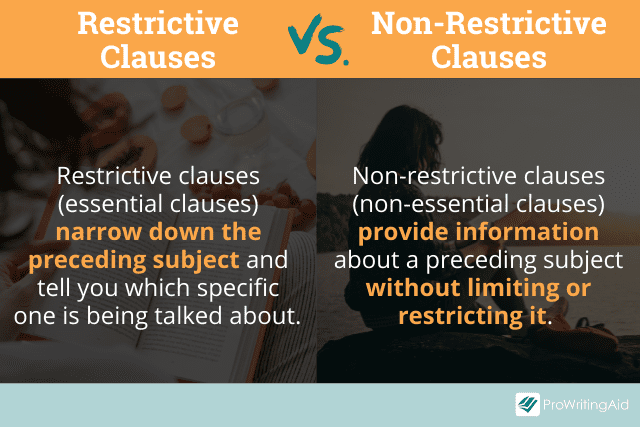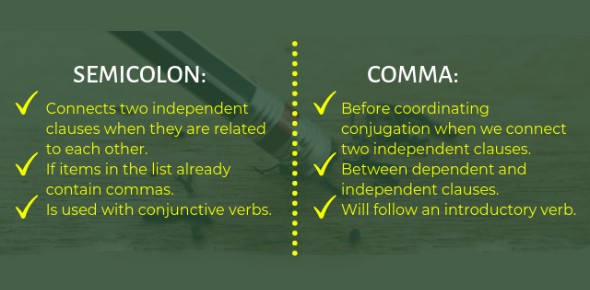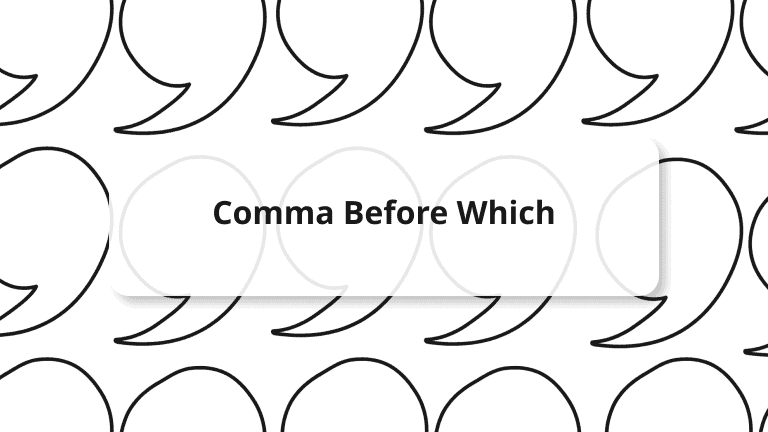To comma, or not to comma? That is the question. What is the right time to use a comma before which?
To put it simply: Use a comma before the word ‘which’ when you are mentioning a non-restrictive clause. This means that you will add a comma when you are adding additional information to a noun. A comma is not necessary when ‘which’ follow a restrictive clause or a preposition. If this doesn’t fully make sense yet don’t fret we will go into more detail in the article.
Those simple punctuation marks are actually not so simple… many people make the mistake of putting them in the wrong place or not using them at all! Putting a comma before or after “but” is also an essential English error that occurs and you should learn about it. In this article, we will dive into learning about when you should put a comma after or before which, and we will understand where it truly belongs because no one likes being misunderstood, right? If you feel you yourself are sometimes misunderstood and want to improve your English skills then have a look at these awesome beginner English lessons, or take advantage of these free online English sites!

Table of Contents
When Should You Put a Comma Before Which
Non-restrictive clause
One of the situations where a comma will be used before which is when there is a non-restrictive clause in the sentence. As mentioned above, a non-restrictive clause means that there is extra information in the sentence, that expands on the noun (such as this exact sentence). A sentence would still make sense if the extra information was not there because it is a full sentence on its own. Here are some examples below of using which with a non-restrictive clause.
Take a Look at the Examples:
Our dog, which is named after my favorite actor, loves to play fetch and run with me in the mountains.
My nephew and I played with his Lego blocks all afternoon, which I bought him.
I traveled to Thailand, Vietnam, China, Japan, and India this summer, which was so much fun.
The above examples are to show you what non-restrictive clauses look like. Removing the bold text from the sentence, which is the non-restrictive clause, wouldn’t change the overall message of the sentence. Let’s take a look at an example below, where we will change the sentence to show you what removing a non-restrictive clause does.
Correct example: Jess’s new house, which was built last year, has a beautiful view of the mountain range.
The non-restrictive clause is in bold, again, acts as a parenthesis and tells you when Jess’s house was built, but is not the main part of the sentence. Now let’s remove the commas and see what it does to the sentence.
Incorrect example: Jess’s new house which was built last year has a beautiful view of the mountain range.
This incorrect example is a grammatical mess. The sentence doesn’t have any sort of break or pause, because there are no commas to emphasize the non-restrictive clause.
Simplified example: Jess’s new house has a beautiful view of the mountain range.
Examples for Comma Before Which
As you can see in the above example, taking out the non-restrictive phrase does not change the sentence that much. Here are more examples:
| Correct | Ruben and Josh started a vegetable garden this year, which is very exciting! |
| Incorrect | Ruben and Josh started a vegetable garden this year which is very exciting! |
| Simplified | Ruben and Josh started a vegetable garden this year. |
| Correct | Mandy’s car, which is bright blue, needs to go in for repairs next week. |
| Incorrect | Mandy’s car which is bright blue needs to go in for repairs next week. |
| Simplified | Mandy’s car needs to go in for repairs next week. |
If you are questioning yourself while going through these examples, then please stop right there! Our team at AmazingTalker wants you to feel empowered, so have a quick look at these easy tips on how to learn English quickly. These tips should get you excited and inspire you to learn more. If you want a whole other range of tips, specifically for speaking, then pop over to our article on how to speak English fluently.

When Shouldn’t You Put a Comma Before Which
Using which in prepositional phrases
A prepositional phrase is a part of a sentence that contains a preposition, such as on, in, of, or to. Sometimes we think a comma should be included in this type of sentence, but you should not put a comma before or after which. Here are some examples:
Incorrect example: The beach on, which we ran has some of the largest hatching grounds for turtles.
Correct example: The beach on which we ran has some of the largest hatching grounds for turtles.
Another one:
Incorrect example: Our house in, which we have been living in for 5 years, is in need of some maintenance and renovations.
Correct example: Our house in which we have been living in for 5 years, is in need of some maintenance and renovations.
Restrictive clause
In simple terms, a restrictive clause defines the meaning of a noun and provides essential information about the noun within the sentence. It basically narrows down a sentence and gives a noun more identification through detail. The sentence would change if the restrictive clause was removed. The word that is usually used for restrictive clauses, but which can be used.
Examples:
Correct example: I liked the house which had a bigger garden and a pool.
Incorrect example: I liked the house, which had a bigger garden and a pool.
Correct example: He sang a song which made me cry.
Incorrect example: He sang a song, which made me cry.
Correct example: She preferred the photo which was black and white.
Incorrect example: She preferred the photo, which was black and white.

When is “that” and “which” interchangeable?
That and which are very seldomly interchangeable, and is only acceptable in British English. They are often interchangeable when a noun is being described. Let’s take a look at some examples:
The chicken loves to eat seeds which are fresh.
The chicken loves to eat seeds that are fresh.
The young boy got a puppy which is female.
The young boy got a puppy that is female.
I like the new car which is a Ford.
I like the new car that is a Ford.
Using which in questions
When your sentence is the actual question, then you will not use a comma as which will most likely be the first word of the sentence.
Correct example: Which way do I turn after the shopping center?
If a sentence contains an indirect question then which might not be the first word. In this situation, you should not put a comma in the sentence, even if you think the sentence looks better with it!
Incorrect example: I asked Chad, which day is his birthday.
Correct example: I asked Chad which day is his birthday.
If the question is put into quotation marks, then this is an exception to the rule. In this scenario, you will use your comma before the quotation marks.
Incorrect example: I asked Chad “Which day is your birthday?”
Correct example: I asked Chad, “Which day is your birthday?”
Semicolon and Comma: ; vs ,
The main function of a semicolon is to join two individual clauses, that are related, without using a conjunction such as ‘and’ ‘but’ etc. The second clause will start with a lowercase letter unless the word is a proper noun or an acronym. Semicolons can also be used when your sentence contains a long list.
A semicolon cannot be a substitute for a comma before the word which. Below are some examples
Correct example: She wanted a brand-new handbag from Gucci, which is expensive.
Incorrect example: She wanted a brand new handbag from Gucci; which is expensive.
Correct example: I have an adorable dog named Fiji, which is a country.
Incorrect example: I have an adorable dog named Fiji; which is a country.
Correct example: We are planning a vacation to Europe and Asia, which will be in December.
Incorrect example: We are planning a vacation to Europe and Asia; which will be in December.

Use a comma before the word ‘which’ when you are mentioning a non-restrictive clause. This means that you will add a comma when you are adding additional information to a noun.
Don’t use which after a preposition, and don’t use which to connect a restrictive clause.
Comma Before WhihcWhich friend can you share this with?
You have now known all about comma before which. If you are busy advancing your English skills then you might have a friend who is doing the same and will definitely benefit from reading this article. Share the link and learn together, it really helps if you have someone by your side! Utilizing apps, listening to podcasts, watching Tv shows, and having online lessons are some of the best ways to learn a language!
In summary, here are the rules for a comma after or before which:
A comma is used when there is a non-restrictive clause in the sentence, that simply adds extra information. It is not vital for the sentence to make sense.
When a question starting with ‘which’ is in quotation marks, then you will be required to put a comma before the quotation starts.
You do not need to add a comma when using prepositional phrases, such as on, in, of, or to.
Restrictive clauses do not have a comma because the sentence is complete as is.
These concepts are easier to grasp once your basic English skills have improved and you feel confident in your ability to speak and understand the English language. If you are unsure of your level of proficiency and would like to get a tutor to test you, then head over to AmazingTalker for a range of high-level tutors that would gladly gauge where you are at and assist you!

















